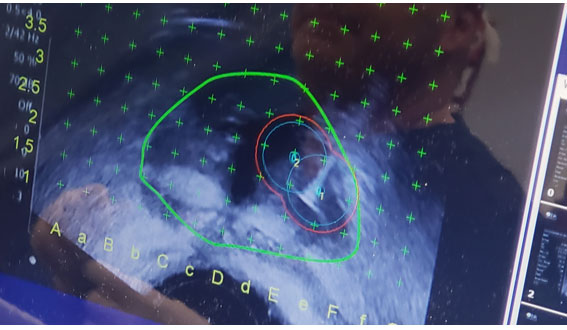
Focal or Targeted Ablation for Prostate Cancer
Introducing the ultimate technology in precision medicine for prostate focal therapy, now offered exclusively at Avant Concierge Urology.
Treating Prostate Cancer with Minimally Invasive Focal Laser Ablation
Prostate cancer remains one of the most prevalent male cancers, and early diagnosis and treatment are crucial to achieving favorable outcomes. Over the years, treatments for prostate cancer have evolved from aggressive surgeries and radiations to more targeted therapies, reducing side effects and improving the quality of life. One of the emerging treatments in the arsenal against low-to-intermediate risk prostate cancer is focal laser ablation (FLA).


What is Focal Laser Ablation?
Focal laser ablation is a minimally invasive procedure that uses the precise power of FDA-cleared lasers to target and eliminate cancerous tissues within the prostate gland. Instead of treating the entire prostate, as done in traditional methods, FLA selectively targets the tumor, preserving the surrounding healthy tissues. This precision not only ensures effective cancer eradication but also significantly minimizes the potential side effects commonly associated with prostate cancer treatments. (Focal Therapy is not a standard of care and is still considered as experimental).
Procedure Overview
The procedure begins with the insertion of a thin, flexible laser fiber into the prostate gland, typically guided by real-time magnetic resonance imaging (MRI) or ultrasound. This ensures the laser is accurately positioned within the tumor. Once in place, the laser emits heat, raising the temperature of the targeted tissue to the point where the cancerous cells are destroyed. After the ablation, the body naturally absorbs the treated tissue over time.
The entire process usually takes a couple of hours, and depending on the specific case and technology used, can be done under local or general anesthesia.
Benefits of FLA
1. Targeted Treatment: The precision of FLA ensures only the cancerous tissue is treated, minimizing damage to surrounding structures such as nerves and blood vessels1. This significantly reduces the risks of common side effects like urinary incontinence and erectile dysfunction.2,3,4,6
2. Outpatient Procedure: FLA can be performed as an outpatient procedure, meaning patients can typically return home the same day, reducing hospital stays and associated costs.1,7
3. Quicker Recovery: The minimally invasive nature of FLA allows for faster recovery. Most men can return to their regular activities within a few days, unlike traditional surgeries which might require weeks of recovery.5,7
4. Less Pain and Discomfort: As there are no incisions involved, post-procedural pain and discomfort are considerably less compared to traditional surgical methods.1,4,7
5. Preservation of Prostate Function: Since FLA targets only the tumor, it leaves the majority of the prostate gland untouched, preserving its function and reducing the risk of complications.1,2,3,4,6
1. Fütterer et al. World J Urol. (2019) 2. Ghai et al. Radiology. (2021) 3. Walser et al. J Vasc Interv Radiol. March (2019) 4. Klotz et al. Curr Opin Urol. (2020) 5. Marks et al. J Urol. (2017) 6. Williams et al. J Vasc Interv Radiol. (2019) 7. Oddens et al. Eur Urol Open Sci. (2022)
Potential Limitations and Risks
While FLA offers numerous benefits, it’s essential to consider some limitations:
1. Limited Long-Term Data: As a relatively newer procedure, long-term efficacy data for FLA is still in the process of being collected, making it essential for patients to discuss potential outcomes and risks with their healthcare providers.
2. Recurrence Risk: Like any cancer treatment, there’s a risk of cancer recurrence. Regular follow-ups and monitoring are crucial.
3. Procedure-Related Risks: Although rare, potential complications include infection, bleeding, urinary difficulties, or unintended damage to adjacent tissues.
Conclusion
Focal laser ablation presents a promising, minimally invasive alternative for treating low-to-intermediate risk prostate cancer. Its ability to target and eradicate cancer with minimal side effects offers men a chance at effective cancer treatment while preserving their quality of life. As with any medical procedure, it’s essential for patients to be well-informed and engage in open dialogue with their healthcare professional to ensure that they make the best decision tailored to their unique circumstances.
Ready to learn more about the possibilities a Focal or Targeted Ablation procedure may offer you?
Set up a consultation